Ivan Bunin, the revered Russian poet and novelist, was born October 22, 1870. Hailed as master of colorful prose, Bunin was the first Russian to win the prestigious Nobel Prize for Literature.
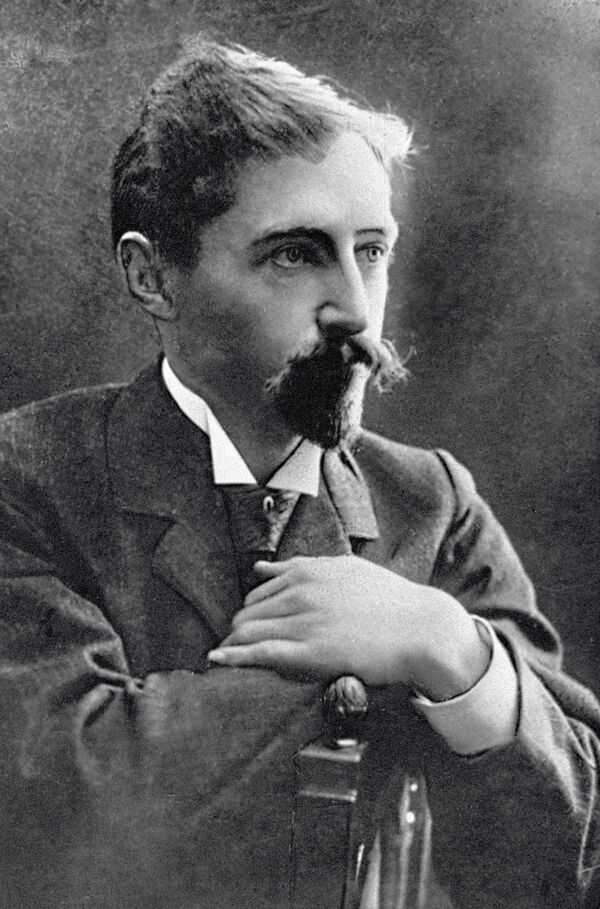
Ivan Bunin, the revered Russian poet and novelist, was born October 22, 1870. Hailed as master of colorful prose, Bunin was the first Russian to win the prestigious Nobel Prize for Literature.
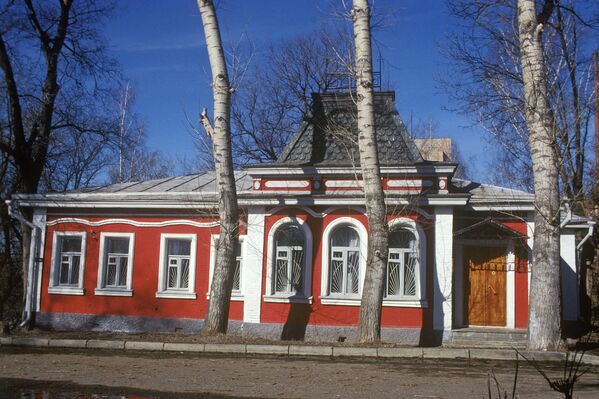
Ivan Bunin was born into an impoverished family of once prosperous landowners, who lived in Voronezh, located 500 kilometers south of Moscow. He spent most of his childhood in Oryol.
Above: Ivan Bunin's house in Oryol.
Above: Ivan Bunin's house in Oryol.

Ivan Bunin started to write poetry when he was 7–8 years old. He published his first poem in 1887.
Above: Members of Sreda literary circle, formed in the second half of the 1890s by Russian realistic writers. First row (from left to right): Leonid Andreyev, Fyodor Shalyapin, Ivan Bunin, Nikolai Teleshov, Konstantin Pyatnitsky. Second row: Skitalets (Stepan Petrov), Maksim Gorky. 1902. Reproduction.
Above: Members of Sreda literary circle, formed in the second half of the 1890s by Russian realistic writers. First row (from left to right): Leonid Andreyev, Fyodor Shalyapin, Ivan Bunin, Nikolai Teleshov, Konstantin Pyatnitsky. Second row: Skitalets (Stepan Petrov), Maksim Gorky. 1902. Reproduction.
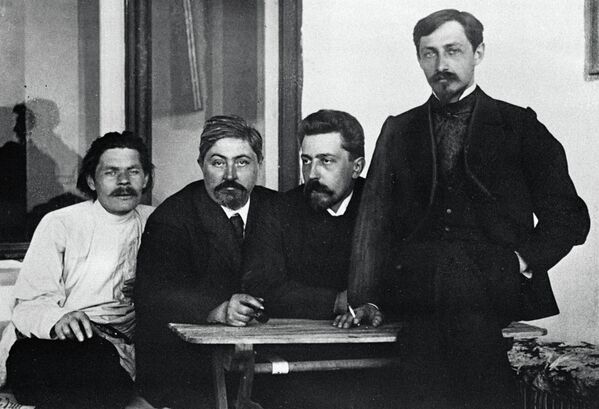
Bunin is the first Russian to receive the much-coveted Nobel Prize for Literature (1933). The award was granted to the writer "for the strict artistry with which he has carried on the classical Russian traditions in prose writing".
Above: Maxim Gorky, Dmitry Mamin-Sibiryak, Nikolai Teleshev and Ivan Bunin in Yalta.
Above: Maxim Gorky, Dmitry Mamin-Sibiryak, Nikolai Teleshev and Ivan Bunin in Yalta.
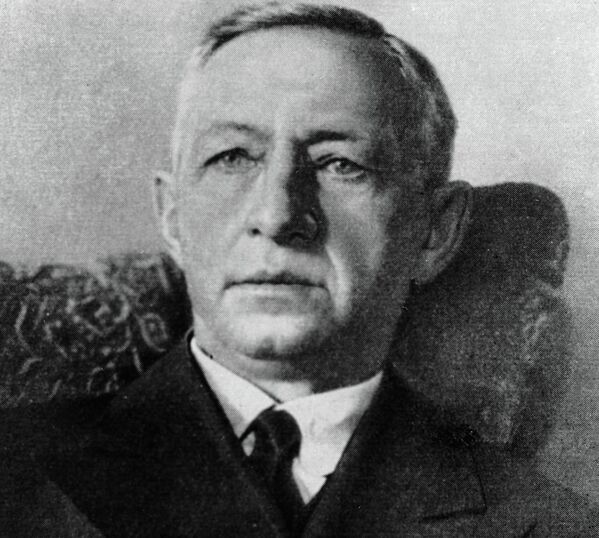
Bunin, a strong opponent of the Nazis, was detained by the Gestapo on the way to Stockholm to receive the Nobel Prize on the grounds of smuggling jewelry. He was forced to drink castor oil to be cleared of charges.
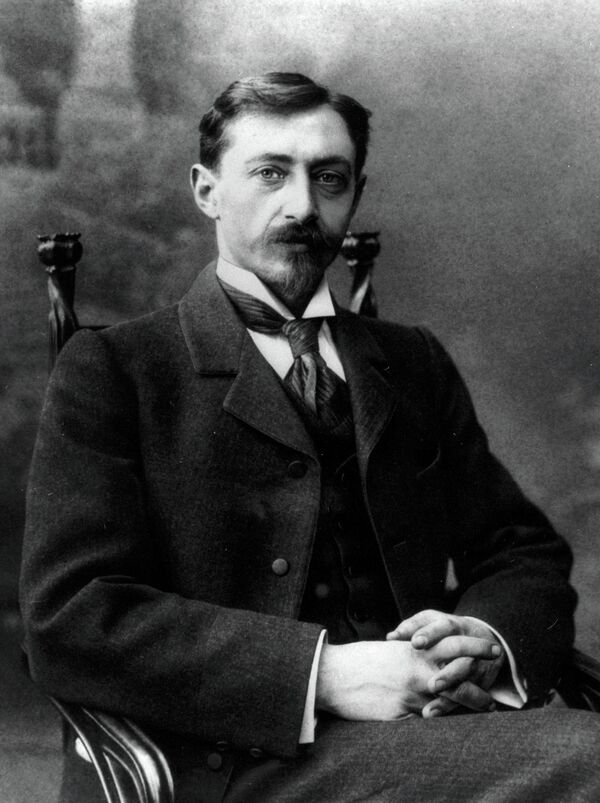
Ivan Bunin’s notable works include short novels "The Village" (1920), "Dry Valley" (1912), "The Gentleman from San Francisco" (1915), his autobiographical novel "The Life of Arseniev" (1933, 1939) the "Dark Avenues" (1946).
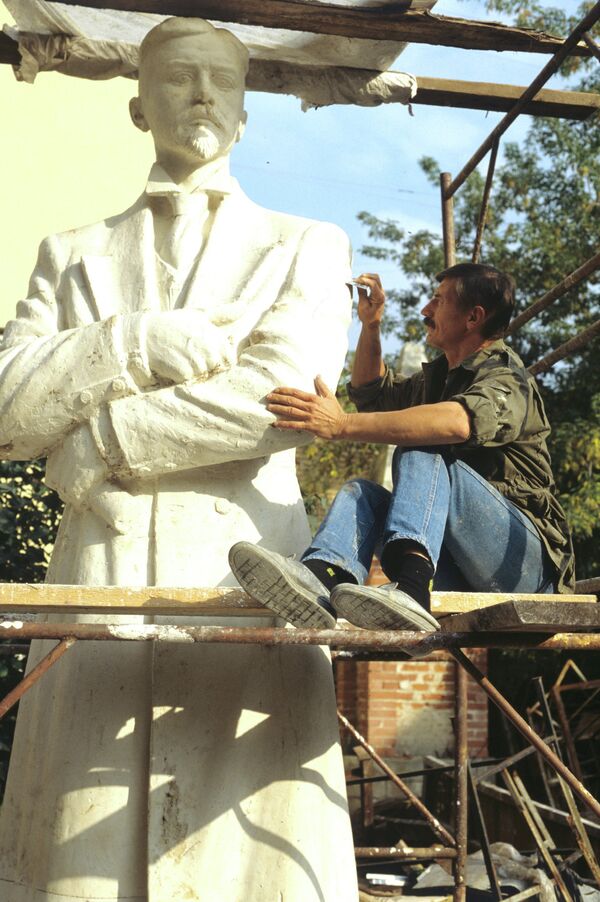
Above: Sculptor Vyacheslav Klykov working on the monument to writer Ivan Bunin.
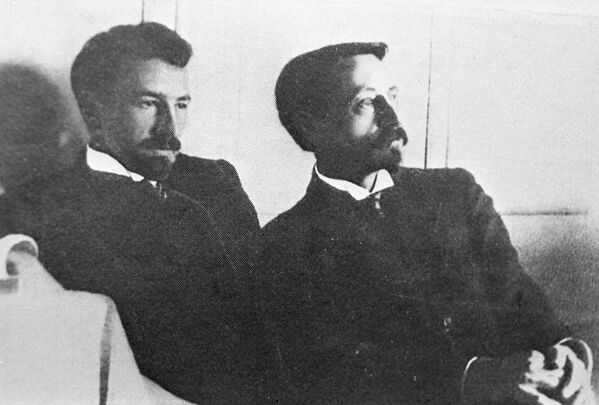
Bunin received praise for his work as a translator. He was awarded his first Pushkin Prize for the translation of "The Song of Hiawatha" by Henry Wadsworth Longfellow inter alia.
Above: Ivan Bunin and Nikolai Pusheshnikov, translator of Rabindranath Tagore's works.
Above: Ivan Bunin and Nikolai Pusheshnikov, translator of Rabindranath Tagore's works.
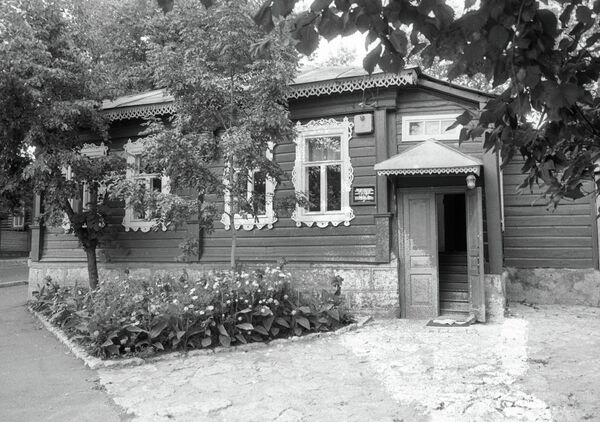
Bunin asserted that he did not belong to any literary school. "I was neither decadent, nor symbolist, romantic, or naturalist. Moreover, I frequented few literary circles. I lived chiefly in the country," he wrote in his autobiography.
Above: Museum of Ivan Bunin.
Above: Museum of Ivan Bunin.
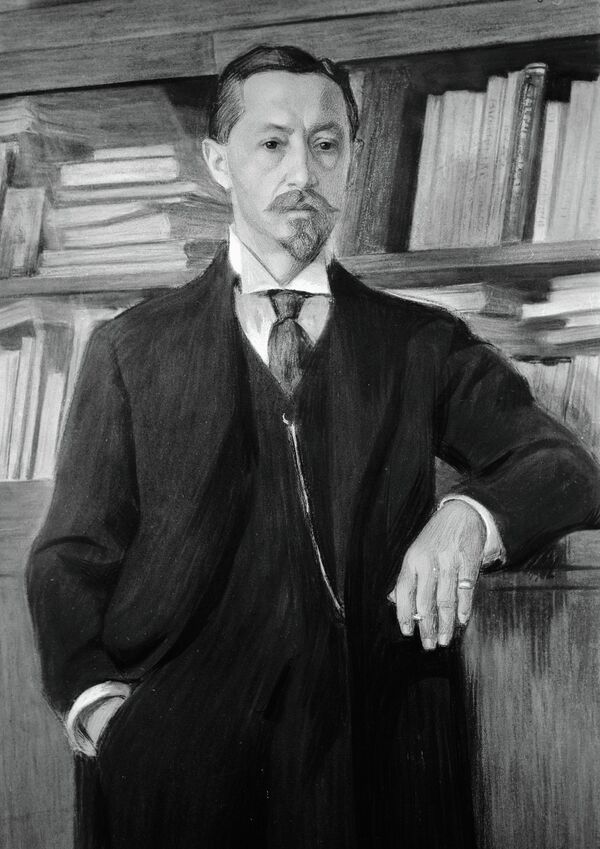
Ivan Bunin was an avid traveler. He explored Russia and traveled extensively abroad. Among other lands, the writer visited Italy, Turkey, the Balkans, Greece, the Middle East and the tropics.
Above: Reproduction of V. Rosinsky's portrait of Ivan Bunin, from the stock of the state literary museum in St. Petersburg.
Above: Reproduction of V. Rosinsky's portrait of Ivan Bunin, from the stock of the state literary museum in St. Petersburg.
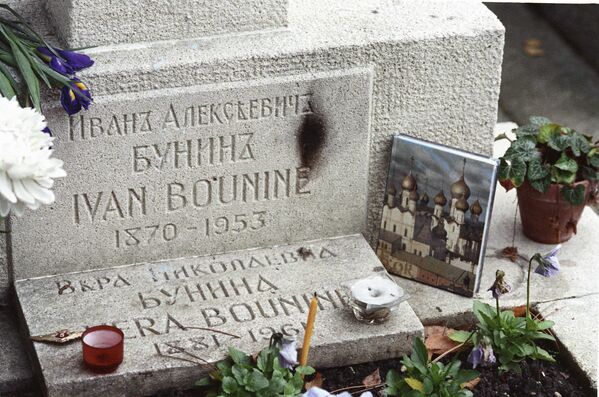
Ivan Bunin left Russia in 1920 and settled in France, where he died of a heart attack in 1953. He is buried at the Sainte-Genevieve-des-Bois Russian Cemetery.
Above: Bunin's grave at the Russian cemetery in France.
Above: Bunin's grave at the Russian cemetery in France.

